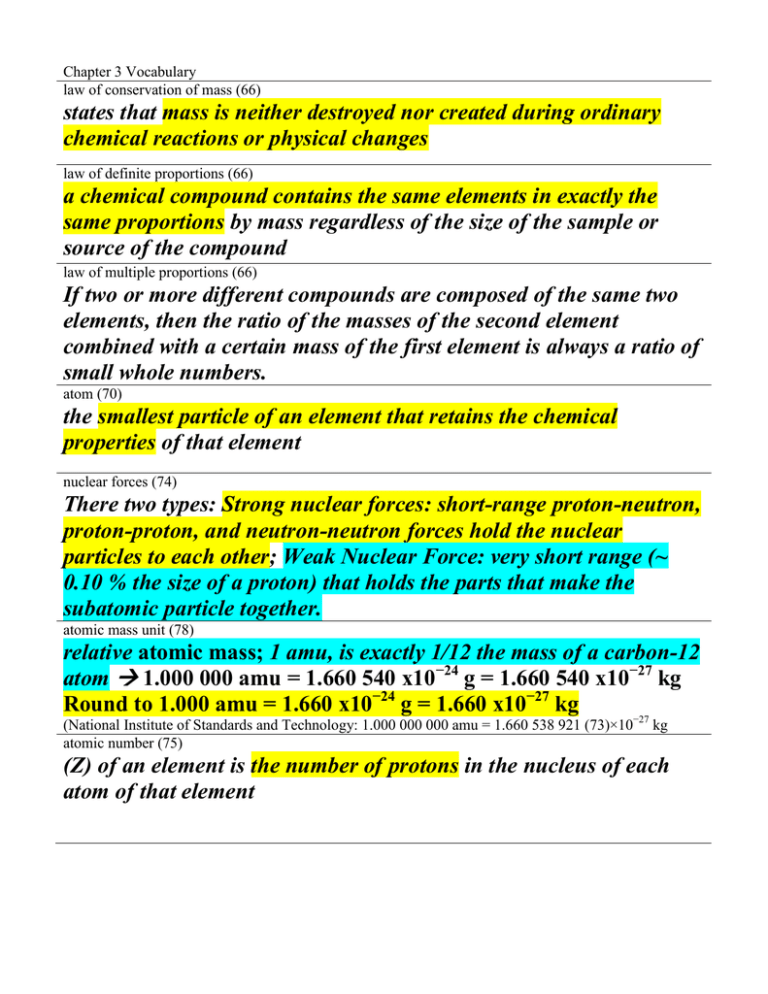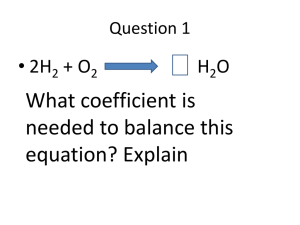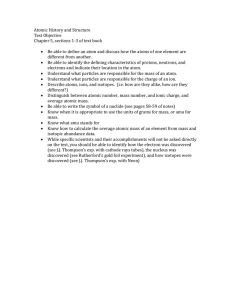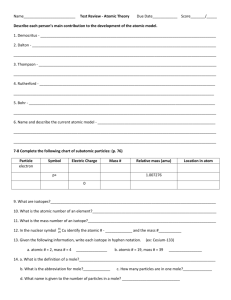states that mass is neither destroyed nor created during ordinary
advertisement

Chapter 3 Vocabulary law of conservation of mass (66) states that mass is neither destroyed nor created during ordinary chemical reactions or physical changes law of definite proportions (66) a chemical compound contains the same elements in exactly the same proportions by mass regardless of the size of the sample or source of the compound law of multiple proportions (66) If two or more different compounds are composed of the same two elements, then the ratio of the masses of the second element combined with a certain mass of the first element is always a ratio of small whole numbers. atom (70) the smallest particle of an element that retains the chemical properties of that element nuclear forces (74) There two types: Strong nuclear forces: short-range proton-neutron, proton-proton, and neutron-neutron forces hold the nuclear particles to each other; Weak Nuclear Force: very short range (~ 0.10 % the size of a proton) that holds the parts that make the subatomic particle together. atomic mass unit (78) relative atomic mass; 1 amu, is exactly 1/12 the mass of a carbon-12 atom 1.000 000 amu = 1.660 540 x10−24 g = 1.660 540 x10−27 kg Round to 1.000 amu = 1.660 x10−24 g = 1.660 x10−27 kg (National Institute of Standards and Technology: 1.000 000 000 amu = 1.660 538 921 (73)×10−27 kg atomic number (75) (Z) of an element is the number of protons in the nucleus of each atom of that element average atomic mass (79) The weighted average of the atomic masses of the naturally occurring isotopes of an element. In our text book, an element’s atomic mass is usually rounded to two decimal places before it is used in a calculation Avogadro’s number (81) the number of particles in exactly one mole of a pure substance: Text book value: 6.022 136 7 x1023 particle per mole (I don’t agree so we will 23 round to) 6.022 x10 particle per mole isotopes (76) atoms of the same element that have different masses – they have different masses due to having different numbers of neutrons mass number (76) the total number of protons and neutrons in the nucleus of an isotope Mass Number = protons + neutrons molar mass (81) mass of one mole of a pure substance Relative molar mass unit is the: amu Gram molar mass unit is the: gram per mole mole (81) (abbreviated mol) is the amount of a substance that contains as many particles as there are atoms in exactly 12 g of carbon-12 nuclide (77) a general term for any isotope of any element – it is a replacement name that can be used in place of atom; but specific for an isotope





